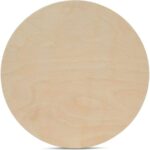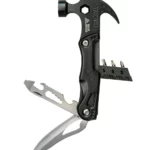I. Understanding the Benefits of Lanolizing Upcycled Wool Diaper Covers
II. Step-by-Step Guide to Lanolizing Your Wool Diaper Covers
III. Tips for Maintaining and Caring for Lanolized Wool Diaper Covers
When it comes to diapering our little ones, we all want the best for their delicate skin and the environment. That’s where lanolizing upcycled wool diaper covers comes into play! If you’re new to this concept, don’t worry! Let’s dive into the wonderful benefits of lanolizing your wool diaper covers.
What is Lanolizing?
Before we jump into the benefits, let’s quickly clarify what lanolizing is. Essentially, lanolizing is the process of treating wool with lanolin, a natural oil derived from sheep’s wool. This process enhances the wool’s natural properties, making it not only softer but also more water-resistant. This is particularly essential for diaper covers, as they need to keep moisture in while remaining comfortable for your baby.
Why Choose Upcycled Wool Diaper Covers?
Opting for upcycled wool is an eco-friendly choice that has great benefits for both your baby and the planet. Here are some key reasons why upcycled wool diaper covers are a fantastic option:
- Eco-Conscious: By choosing upcycled wool, you’re giving new life to materials that would otherwise go to waste. This reduces landfill waste and is a great way to contribute to a more sustainable future.
- Natural Fibers: Wool is a natural fiber that’s breathable and hypoallergenic, making it a perfect choice for sensitive skin. It reduces the chances of diaper rashes and irritation, which is a huge win for parents!
- Durability: Wool naturally has oleophilic properties, meaning it repels dirt and moisture. When properly cared for, upcycled wool can last through multiple children, making it a savvy investment.
Benefits of Lanolizing Wool Diaper Covers
So, why should you lanolize your upcycled wool diaper covers? Here are some of the fantastic benefits:
- Enhanced Water Resistance: Lanolizing creates a waterproof barrier that helps keep moisture from soaking through. This means fewer leaks and a much more comfortable experience for your little one!
- Soft and Cozy: The lanolin treatment softens the wool, making it even cozier for your baby. You’ll love how snuggly they feel in their diaper covers!
- Odor Control: Wool naturally has antibacterial properties, which can help minimize odors. Lanolizing amplifies this effect, keeping your diaper covers fresh and clean.
- Longevity: Regular lanolizing can help extend the life of your wool covers. This means you can enjoy them for many diapering days to come!
Conclusion
In the end, lanolizing upcycled wool diaper covers isn’t just a chore—it’s an essential practice that enhances the performance, comfort, and lifespan of these fantastic products. By embracing this process, you’re making a conscious choice for your child and the environment. So, gather those diaper covers, and let’s get ready to lanolize!
Step-by-Step Guide to Lanolizing Your Wool Diaper Covers
So, you’ve decided to lanolize your upcycled wool diaper covers, and you’re probably wondering how to go about it. Don’t worry; I’ve got your back! Lanolizing may sound a bit daunting at first, but it’s a straightforward process that can really enhance the performance of your wool covers. Let’s break it down step by step!
What You’ll Need:
- Clean wool diaper covers: Make sure they are freshly washed and dried.
- Lanolized wool wash: You can find this at most baby supply stores or online.
- Hot water: The hotter, the better, but make sure it’s safe to handle!
- A bowl or sink: Preferably one that’s large enough to submerge your covers.
- Measuring spoon: For the lanolin.
Step 1: Prepare Your Lanolin
First things first: you need to get your lanolin ready. If you’re using a lanolin wash, follow the instructions on the bottle. If you have pure lanolin, you can melt a small amount (about 1-2 tablespoons) in a bowl with hot water. This will help it mix well and evenly coat your wool.
Step 2: Mix It Up!
Next, grab your bowl or sink filled with hot (but not boiling!) water. Add your melted lanolin mixture and give it a good swirl to distribute the lanolin evenly. The water should be warm enough to help the lanolin dissolve but not so hot that it will damage your wool. Aim for a comfortable temperature, something like a hot bath!
Step 3: Submerge Your Covers
Now it’s time for the fun part! Gently place your clean wool covers into the lanolin-water mixture. Make sure they are fully submerged, and let them soak for about 30 minutes. This is when the lanolin does its magic, so don’t rush this step!
Step 4: Squeeze and Rinse
After soaking, carefully squeeze out the excess water—don’t wring or twist your covers, as this can damage the fibers. Rinse them under cool water to remove any leftover lanolin, but remember to be gentle! You want to keep your wool in tip-top shape.
Step 5: Drying Time
After rinsing, lay your covers flat on a clean, dry towel. Roll the towel up to absorb more water, then lay your covers flat on a drying rack or a fresh towel to air dry. Avoid hanging them, as that can stretch the fabric. Let them dry completely before using them again!
Bonus Tips:
- Lanolize your covers every few weeks or whenever they start to lose their water resistance.
- If you notice any lanolin build-up, just give your covers a gentle wash with a wool-safe soap to remove it.
And there you have it! Lanolizing your wool diaper covers is a simple yet effective way to ensure they stay functional and comfortable for your little one. Happy lanolizing!
Tips for Maintaining and Caring for Lanolized Wool Diaper Covers
So, you’ve lanolized your upcycled wool diaper covers, and they’re looking fabulous! But the journey doesn’t end there. To keep your wool covers in tip-top shape, proper maintenance and care are essential. Here are some friendly tips to ensure your wool diaper covers stay soft, effective, and long-lasting.
1. Washing Your Wool Covers
Wool is naturally self-cleaning to some extent, but that doesn’t mean you can skip washing altogether! Here’s how to do it:
- Spot Clean: For minor messes, simply spot clean with a damp cloth. This helps preserve the lanolin and avoid unnecessary washing.
- Gentle Hand Wash: For a deeper clean, fill a basin with lukewarm water and add a wool-friendly detergent. Avoid harsh chemicals that can strip the lanolin. Soak your covers, gently agitate, and rinse with cool water.
- Do Not Wring: When rinsing, avoid wringing your wool. Instead, press gently to remove excess water. Wringing can stretch and damage the fibers.
2. Drying Techniques
Drying wool diaper covers can be a bit tricky, but don’t worry! Follow these tips to keep them in great shape:
- Flat Drying: Always lay your wool covers flat on a dry towel to dry. This prevents stretching and helps maintain their shape.
- Avoid Heat: Never put wool in the dryer or expose it to direct sunlight. High heat can cause shrinkage and damage the fibers.
- Air Dry: Find a cozy spot in your home where air circulates, and let your covers air dry naturally. This can take a bit of time, but it’s worth the wait!
3. Re-Lanolizing Your Wool Covers
Over time, the natural lanolin will wear off, especially after several washes. To keep your covers water-resistant, you’ll need to re-lanolize them occasionally. Here’s a simple guide:
- Choose the Right Lanolin: Use a high-quality lanolin that’s specifically designed for wool care.
- Mix with Warm Water: In a bowl, mix lanolin with warm water until it dissolves completely.
- Soak the Covers: Soak your clean, damp wool covers in the lanolin mixture for about 30 minutes.
- Rinse and Dry: Rinse gently and then lay flat to dry as mentioned earlier.
4. Storing Your Wool Covers
When it’s time to put your wool covers away, proper storage is essential to keep them in good condition:
- Clean Before Storing: Ensure your covers are clean and dry before you tuck them away. This helps prevent any odors or mold growth.
- Use a Breathable Bag: Store them in a breathable cotton bag or container to keep them protected without trapping moisture.
- Avoid Plastic: Avoid plastic storage, as it can lead to a build-up of moisture and create an environment for mildew.
By following these tips, you’ll keep your wool diaper covers looking and performing great for a long time. Remember, a little care goes a long way! Happy diapering!










Comments